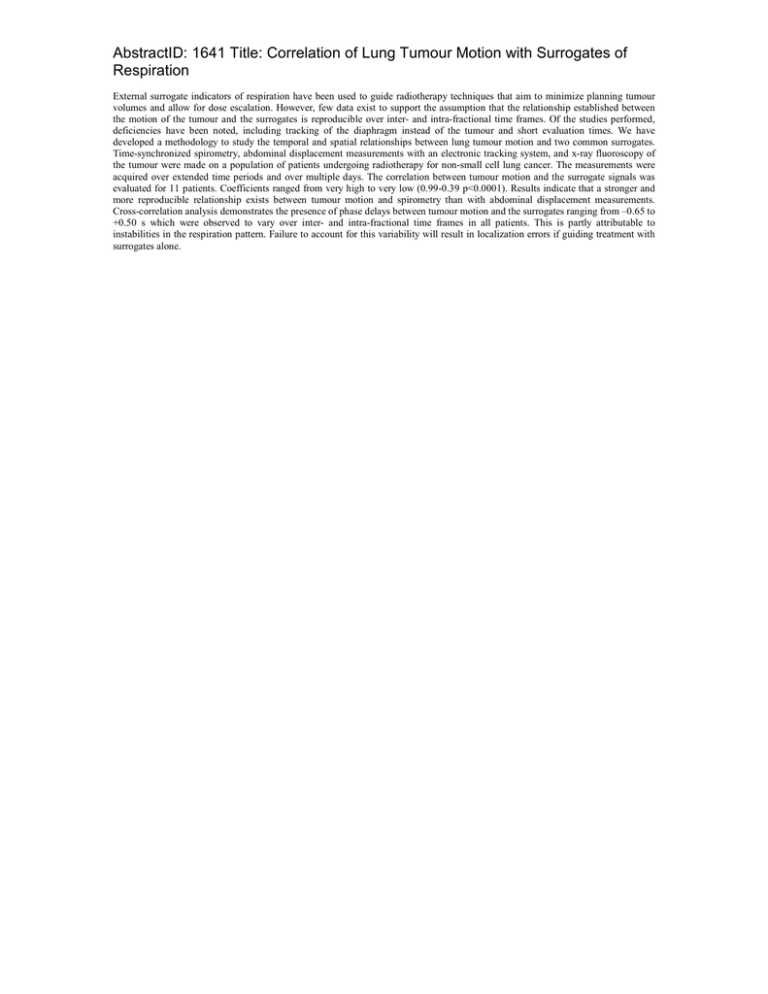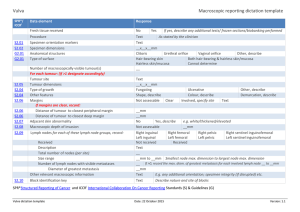AbstractID: 1641 Title: Correlation of Lung Tumour Motion with Surrogates... Respiration
advertisement

AbstractID: 1641 Title: Correlation of Lung Tumour Motion with Surrogates of Respiration External surrogate indicators of respiration have been used to guide radiotherapy techniques that aim to minimize planning tumour volumes and allow for dose escalation. However, few data exist to support the assumption that the relationship established between the motion of the tumour and the surrogates is reproducible over inter- and intra-fractional time frames. Of the studies performed, deficiencies have been noted, including tracking of the diaphragm instead of the tumour and short evaluation times. We have developed a methodology to study the temporal and spatial relationships between lung tumour motion and two common surrogates. Time-synchronized spirometry, abdominal displacement measurements with an electronic tracking system, and x-ray fluoroscopy of the tumour were made on a population of patients undergoing radiotherapy for non-small cell lung cancer. The measurements were acquired over extended time periods and over multiple days. The correlation between tumour motion and the surrogate signals was evaluated for 11 patients. Coefficients ranged from very high to very low (0.99-0.39 p<0.0001). Results indicate that a stronger and more reproducible relationship exists between tumour motion and spirometry than with abdominal displacement measurements. Cross-correlation analysis demonstrates the presence of phase delays between tumour motion and the surrogates ranging from –0.65 to +0.50 s which were observed to vary over inter- and intra-fractional time frames in all patients. This is partly attributable to instabilities in the respiration pattern. Failure to account for this variability will result in localization errors if guiding treatment with surrogates alone.


